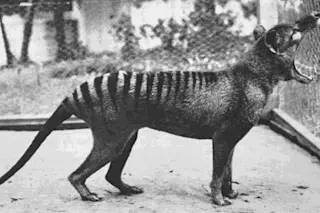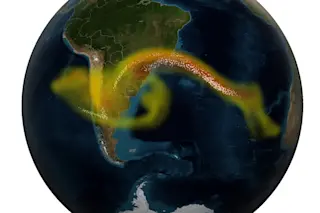Benjamin, the last living thylacine (as far as we know), photographed in 1933 at Tasmania's Hobart Zoo, three years before his death. Credit: Photographer unknown, Wikimedia Commons. While I have mixed feelings about de-extinction, particularly for animals that have been out of the picture for thousands of years (I'm looking at you, woolly mammoth), I'd argue the species with the strongest case for giving it a shot would be Thylacinus cynocephalus, better known as the Tasmanian Tiger or thylacine. This fascinating marsupial, once found in much of Australia (particularly the island of Tasmania, as its name suggests), went extinct in the 20th century — though reports of alleged sightings continue to accumulate. Whether any of those sightings are legit, or the thylacine earns a second chance through de-extinction, new research is giving us a novel look into the workings of the thylacine brain and how it might have lived in ...
Thylacines: Getting Inside the Head of an Extinct Predator
Explore the fascinating world of the Tasmanian Tiger, its extinction, and groundbreaking research on its ancient brain.
More on Discover
Stay Curious
SubscribeTo The Magazine
Save up to 40% off the cover price when you subscribe to Discover magazine.
Subscribe













